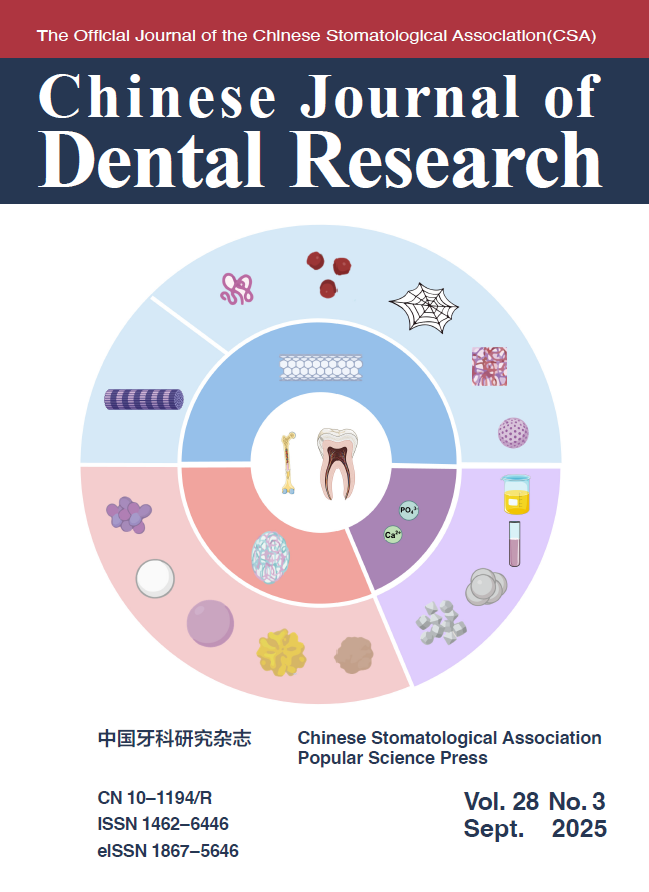Chin J Dent Res 2025;28(3):225–229; doi:10.3290/j.cjdr.b6553458
Non-surgical Management of a Facial Sinus Tract Originated from the Maxillary First Molar Periapical Infection: a Case Report
Writer:Yu Han WANG, Zu Hua WANG, Xiao Yan WANG Clicked:
Objective: To assess the current periodontal status of 35 to 44-year-olds from the Chinese population and to analyse potential influence factors on periodontal disease. Methods: The data of subjects were collected from both urban and rural areas of all 31 provinces, autonomous regions and municipalities of the mainland of China, as part of the 4th National Oral Health Survey. All subjects were aged 35 to 44 years old. In total, 4410 subjects were enrolled in the present study. Each subject was asked to undergo a professional oral examination and to fill in a questionnaire. Periodontal health status was evaluated by probe bleeding, calculus, periodontal pocket depth and clinical attachment loss. The data were analysed using the chi-square test and binary logistic regression analysis. Results: The prevalence of probe bleeding and calculus was 87.4% and 96.7% respectively among the 35 to 44-year-old population. Prevalence of shallow pockets (4 mm PD 6 mm) and deep pockets (PD 6 mm) was 52.7% and 6.9% respectively
|
The diagnosis of a facial sinus tract caused by periapical infection remains difficult due to the wide range of potential aetiologies. The canine is the only maxillary tooth that has been reported to serve as the source of infection for a facial sinus tract. The scenario encountered in the present case was extremely rare as the facial sinus tract was caused by the maxillary molar. The buccal alveolar bone of the maxillary right first molar had been destroyed due to periodontitis and aberrant occlusal force, which caused a periapical abscess in the maxillary right first molar site and ultimately drained extraorally. The purpose of this case report is to illustrate the potential for a periapical lesion of the maxillary molar to induce facial sinus tracts and propose a non-surgical therapeutic approach for such cases.
Keywords: facial sinus tract, maxillary first molar, non-surgical management, periapical infection
(editor:CJDR) |




